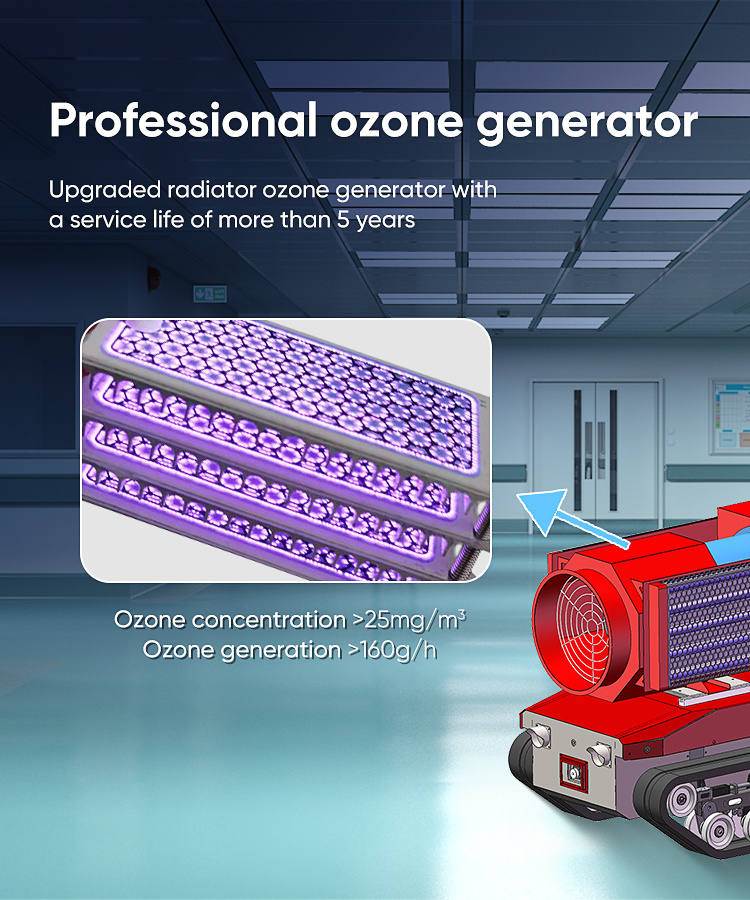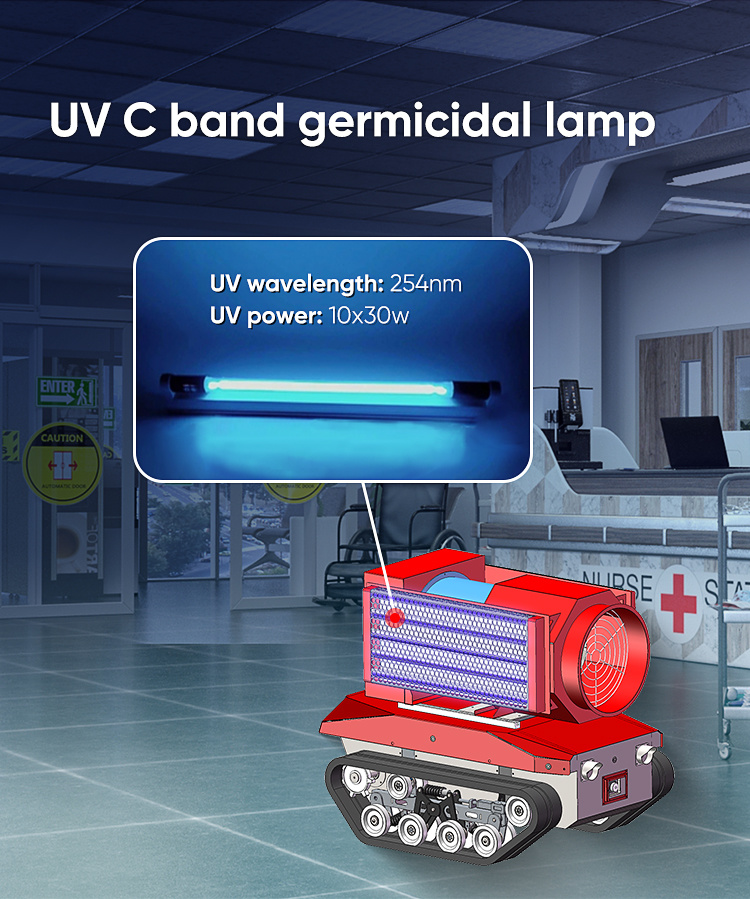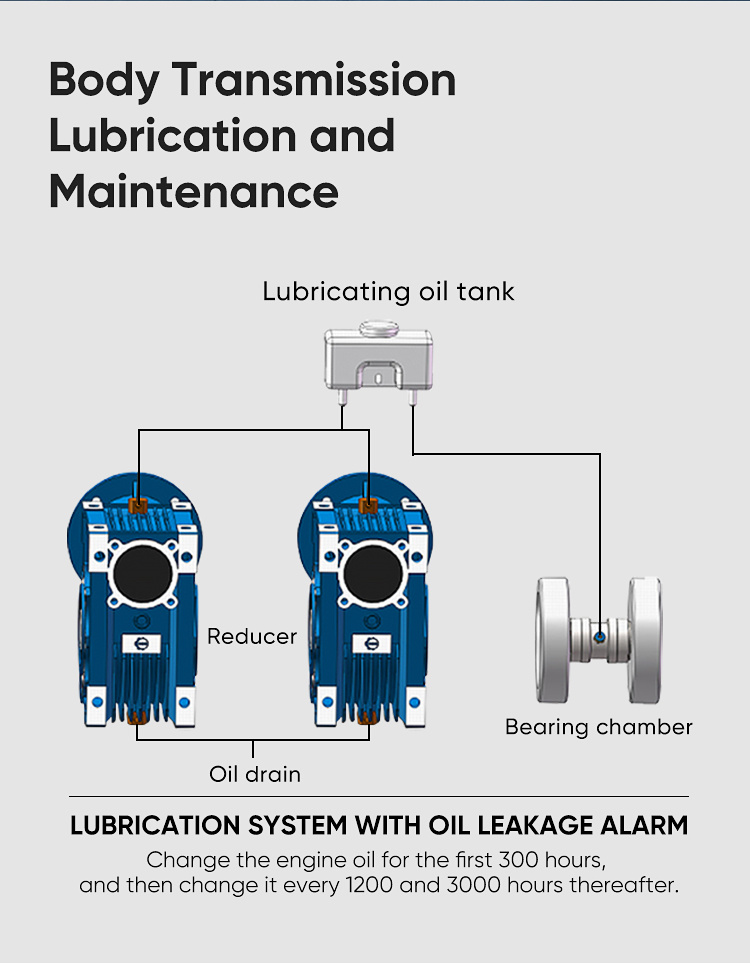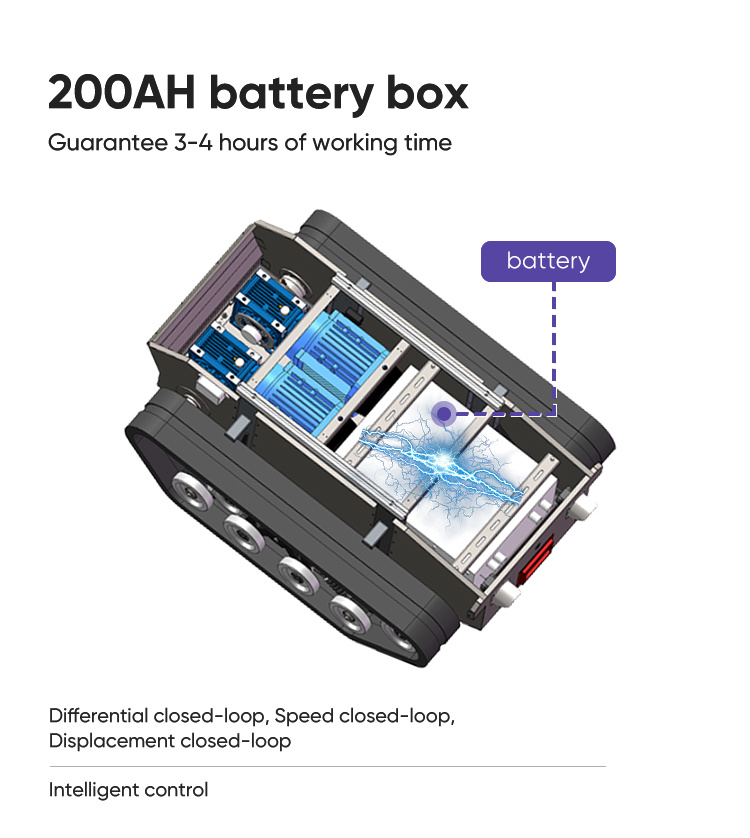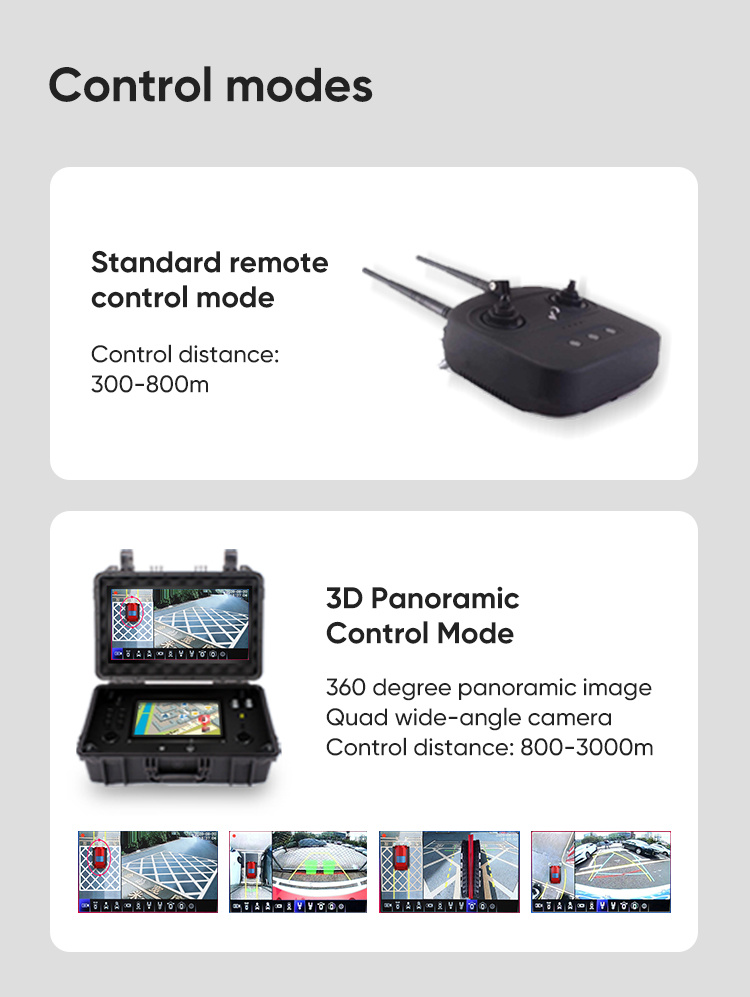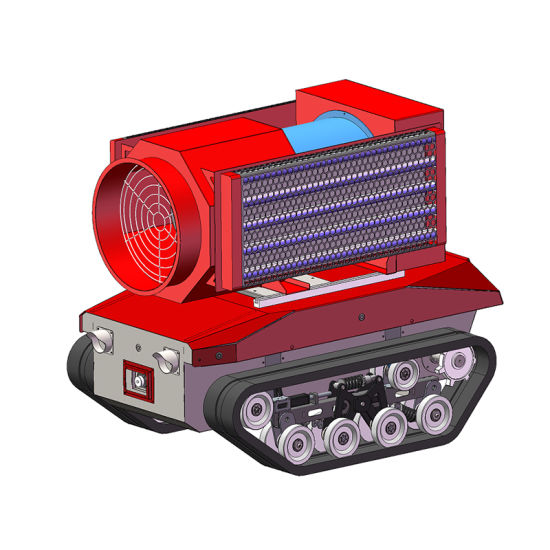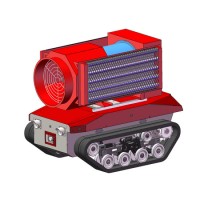Model NO.:DF-UVO3
Min quantity:1Set
Inquiry
Hospital Disinfection Ultraviolet Ozone Germicidal UVC Room Sterilizer Robot UV SteriliserIntroduction of disinfection robot:
The physical disinfection robot is a robot that performs large-scale disinfection by generating ozone and anti-virus ultraviolet rays as the main disinfection and sterilization methods.
Application
Disinfection and sterilization,Antivirus and fresh,Deodorization and purification
In areas with dense outbreaks, regional sterilization
Instead of manual entry into dangerous and polluted environment disinfection operations
Dual-mode work, superimposed effects;
No secondary pollution, automatic digestion after 30 minutes of deactivation;
only consumes energy, not pharmacy;
Suitable for a wide range of places such as subways, schools, communities, warehouses, etc.
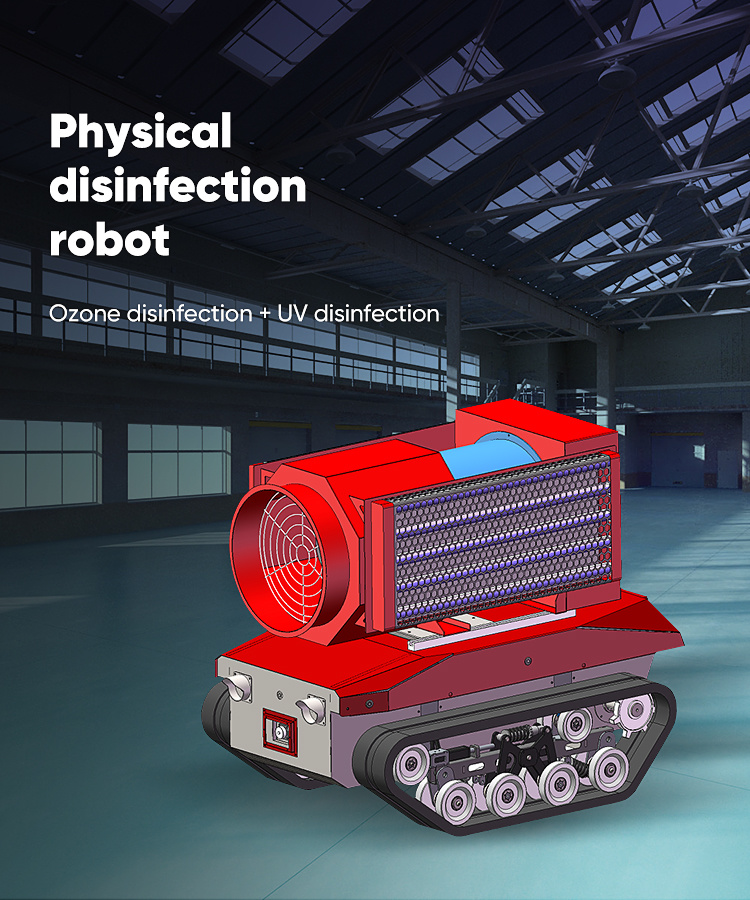
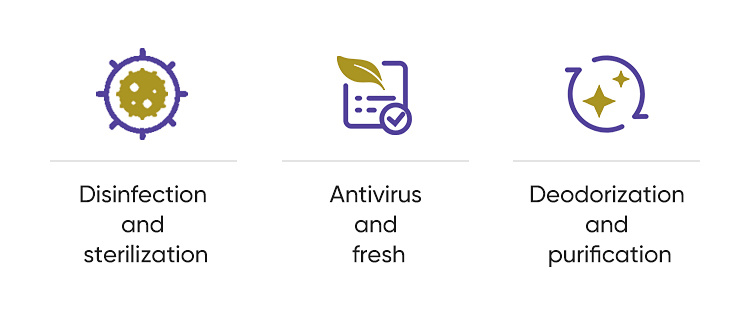
Advantages:
A: Remote and unmanned, which can protect the safety of operators to the greatest extent;
B: Low noise, high efficiency
C: The car body is small and can enter a narrow space
D: No consumables required
Technical parameters of disinfection robot:
| Parameters | |||
| Dimensions | 1350*840*1050mm | Weight | 280KG |
| Drive power | 2*1.5kw | Max. walking speed | 6KM/h |
| Air volume | 6000m³/h | Ozone concentration | >25mg/m³ |
| Ozone generation | >160g/h | Ozone production mode | Ceramic sheet / quartz tube (optional) |
| UV wavelength | 254nm | UV power | 10x30w |
| Working hours | 6-8 hours | battery capacity | 200Ah/48V |
| Max. climbing angle | 30 | Remote control distance | Mode 1:300-800m Mode 2:800-3000m |
Details of disinfection robot:
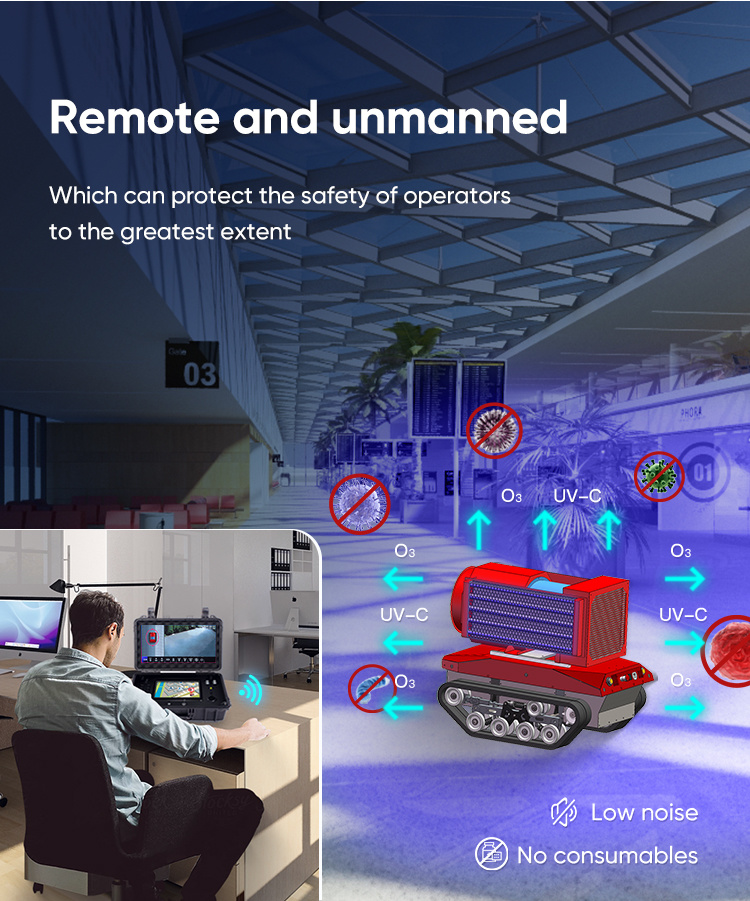
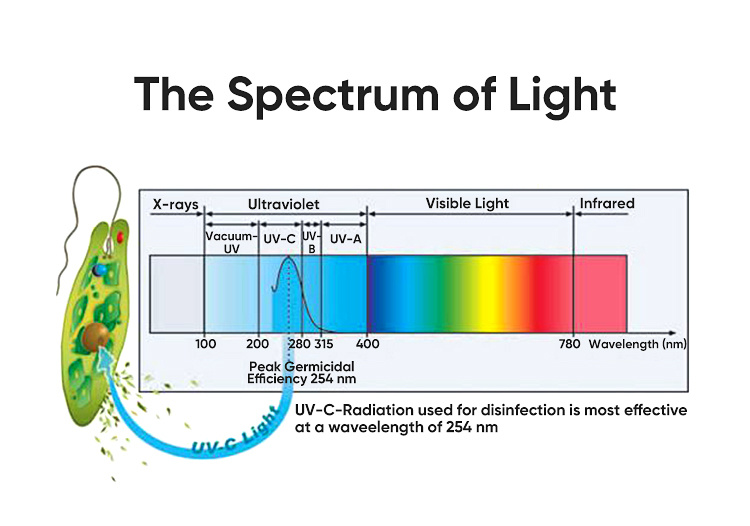
| Time to kill viruses and bacteria in the UV C band | |||||
| Class | Time (s) | Class | Time (s) | ||
| Bacteria | Bacillus anthracis | 0.30 | Mold spores | Aspergillus niger | 6.67 |
| Clostridium tetani | 0.33 | Mucor mucedo | 0.23-4.67 | ||
| Dysentery bacilli | 0.15 | Penicillium | 2.93-0.87 | ||
| Escherichia coli | 0.36 | Algae | blue-green algae | 10-40 | |
| Staphy lococcus albus | 1.23 | Nematode eggs | 3.40 | ||
| Micrococcis candidus | 0.41 | green algae | 1.22 | ||
| Virus | Mycobacterium Virus | 0.20 | protozoa | 4-6.70 | |
| Influenza | 0.23 | Fish disease | Vitiligo | 2.67 | |
| Poliovirus 1 | 0.80 | Infectious pancreatic necrosis | 4.0 | ||
| Hepatitis B virus | 0.73 | viral hemorrhagic disease | 1.6 | ||
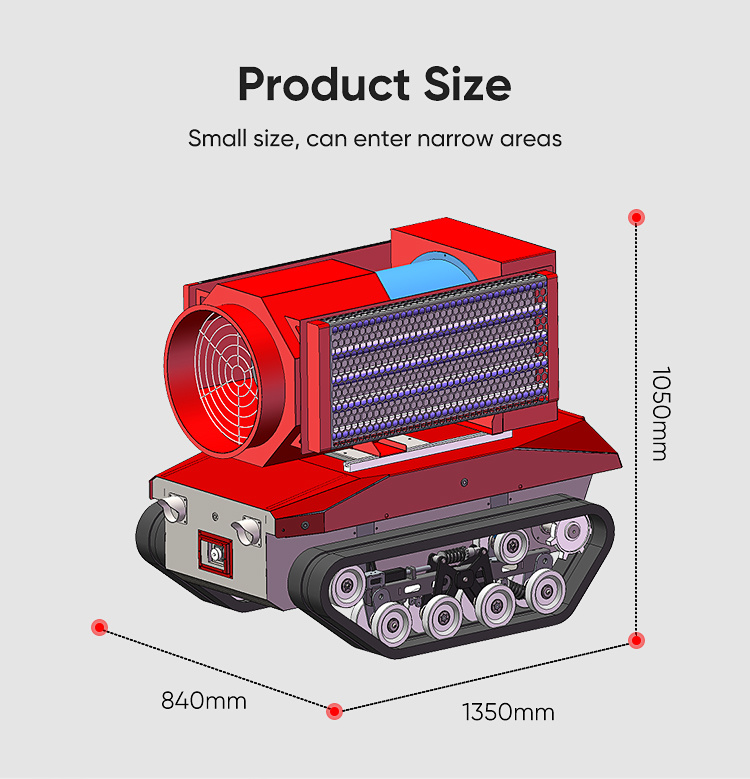
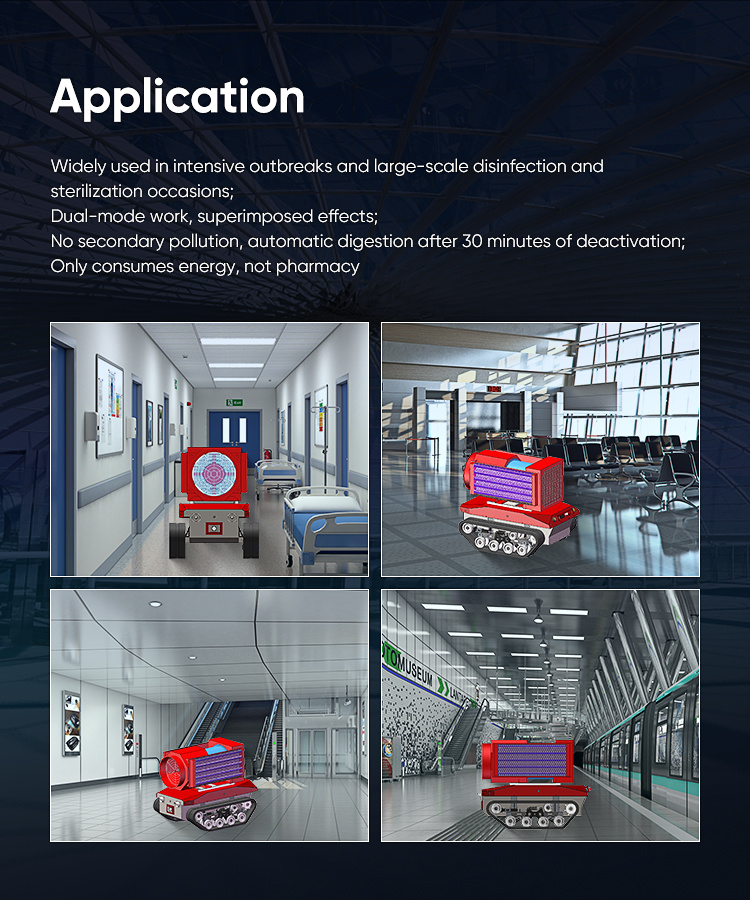
| The reference concentration of ozone used in the air (1ppm=2.14mg/m3) | ||||
| Application | Class | Concentration ppm | Ozone amount per m3 per hour mg/H | Instructions |
| Disinfect | Medical equipment | 20 | 50-100 | 20ppm disinfection time 60min (GB YY0215.2-95) |
| Cold storage | 6-10 | 15-25 | Continuous startup according to storage capacity and pollution degree, mainly to kill mold | |
| Food workshop | 1.0-1.5 | 2.5-3.5 | Every day after work, start to supply O3gas | |
| Ward, operating room | 10-20 | 25-50 | Turn on the machine when it needs to be disinfected, and check the total number of bacteria according to the standard | |
| Disinfection of work clothes | 10-20 | 25-50 | The relative humidity is about 90%, and the clothes are hung on hangers | |
| Antivirus fresh | General place | 1-2 | 2.5-5 | Timed start |
| Egg | 2-2.5 | 5-5.5 | Supply O3gas intermittently, start 2-3 times a day | |
| Banana | 2.5-3.5 | 5.5-8 | ||
| Apple | 2.0 | 5 | ||
| Vegetables with low chlorophyll | 1.5-1 | 3.5-2.5 | ||
| Fish, cheese | 0.5-1 | 1.5-2.5 | ||
| Deodorant purify | Morgue | 3 | 7 | If there is a smell, turn it on to deodorize |
| Fish processing plant | 3 | 7 | The polluted gas enters the treatment pipeline, and O3gas is put into the pipeline for oxidation and deodorization. If the odor in the workshop is serious, O3gas should be added to the air inlet of the workshop, and it is advisable to smell no O3gas. | |
| Slaughterhouse | 2-3 | 5-7 | ||
| Fatty acid factory | 10 | 25 | ||
| Rubber factory | 3-10 | 7-25 | ||
| Garbage and waste disposal | 10 | 25 | ||
| Sewage treatment plant | 1-2 | 2.5-5 | ||
